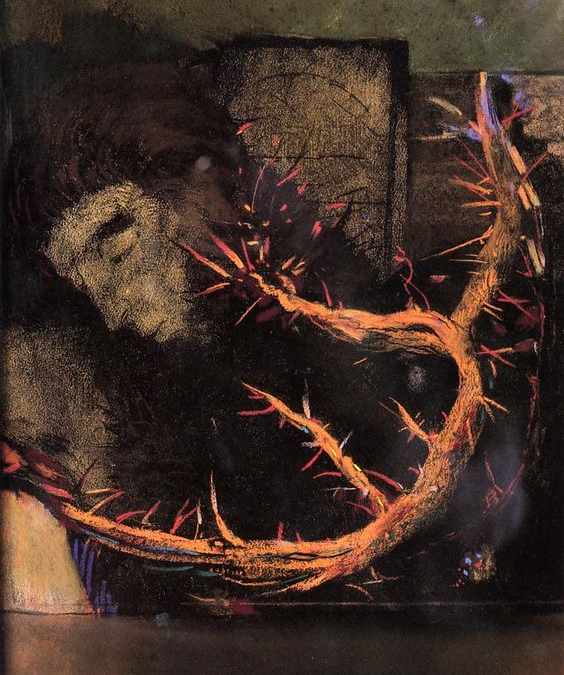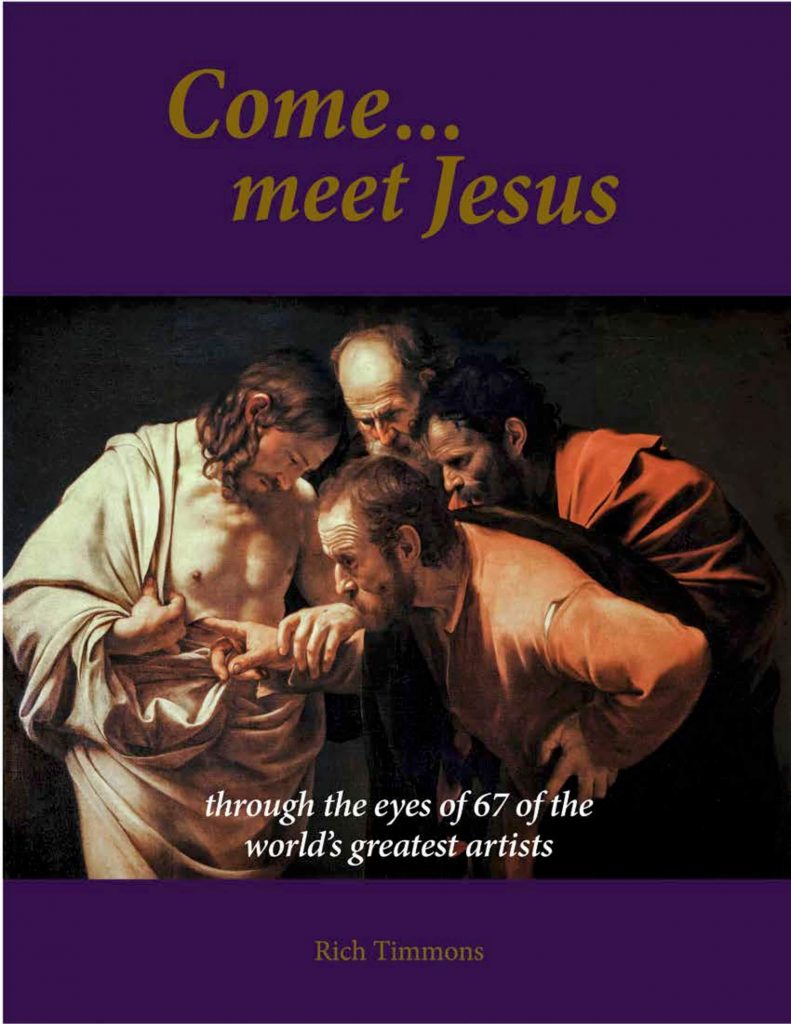He was oppressed, yet when he was afflicted, he didn’t open his mouth. As a lamb that is led to the slaughter, and as a sheep that before its shearers is silent, so he didn’t open his mouth. He was taken away by oppression and judgment. As for his generation, who considered that he was cut off out of the land of the living and stricken for the disobedience of my people?They made his grave with the wicked, and with a rich man in his death, although he had done no violence, nor was any deceit in his mouth. Yet it pleased Yahweh to bruise him. He has caused him to suffer. When you make his soul an offering for sin, he will see his offspring. He will prolong his days and Yahweh’s pleasure will prosper in his hand. Isaiah 53:7-10
What a gentle and deeply moving portrayal of the crucifixion. The composition is intensely graceful and all the more striking because we know this is not a graceful moment; it is a bloody and violent one. Jesus and the cross are soft and grainy, feathered on the paper with the side of a piece of charcoal or pastel. His passive downward gaze is counterbalanced by the aggressive thorns overtaking Him, arcing upward and spiking against His turned cheek. Jesus is the meek and quiet Lamb of God here.
Odilon Redon was not a Christian, but a symbolist painter who was interested in portraying unseen realities of emotions and the supernatural rather than visual accuracy. He was very drawn to the human-yet-divine figure of Christ and drew many variations of the theme of Christ crowned with thorns. Here though, the thorns are not a crown, but are almost alive themselves, and seem to be the very thing that is killing Jesus… which is actuallythe spiritual unseen reality of this historical moment. Thorns came into the world through the fall and are a symbol of the curse that infected the whole world as a result of Adam’s sin. They become a symbol of sin itself. And it truly was sin that put Jesus on the cross, and “held him there until it was accomplished”, as the hymn says. The thorns here are a living, threatening source of evil and pain, much like sin. Jesus allowed Himself – so meek and gentle – to be overtaken and killed by this sin and all the guilt and punishment, so that He might destroy its power.
It is so counter-intuitive! The thorns here appear to be winning, and certainly, on the cross, it looked like evil was going to win. They are entangling Him, creeping over His form, piercing Him, mocking Him, just like the historical crown of thorns was meant to do. He hangs there, silent, seemingly defeated. But because of this, He actually defeats sin and death, forever. By His death and resurrection, Jesus triumphs over the curse and undoes the tangling grip it has held on humanity for thousands of years.


